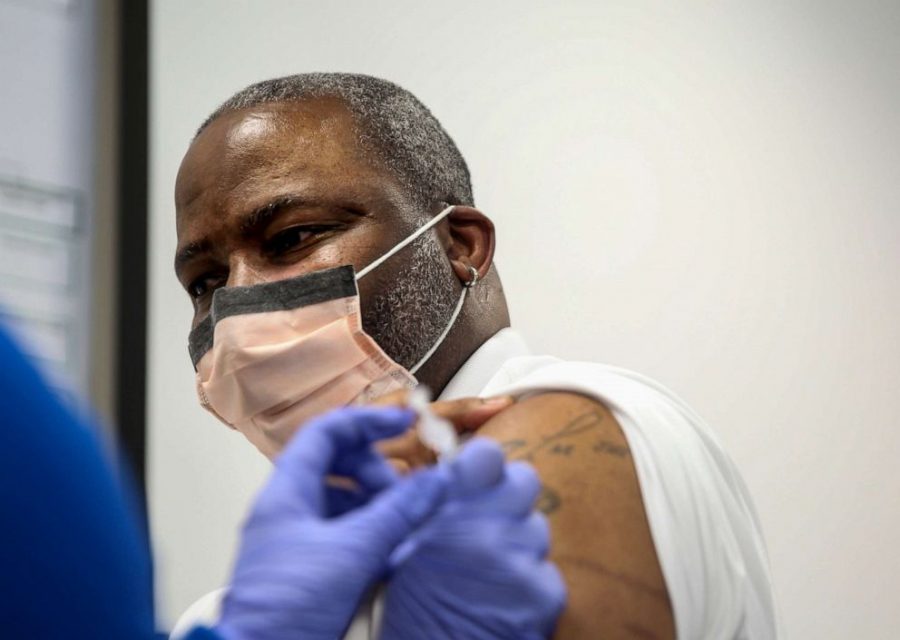Column: COVID-19: Race in America
February 1, 2021
With this global pandemic approaching its first anniversary, scientists have been observing and analyzing this disease from every perspective. The number of positive cases has fluctuated since COVID-19 emerged in the U.S. in March 2020. It has grown terrifyingly clear that racial and ethnic minorities are the most affected by this spiraling pandemic.
According to the 2019 census, America’s last recorded number of impoverished citizens was 10.9%. While the new number is not yet recorded, it is a fair assumption that it has increased substantially since 2020. COVID-19 put low-income Americans in a compromising position because they were most likely among the people losing their jobs. Without their jobs and possibly health care coverage, these people are put at a greater risk for contracting the virus.
The Centers for Disease Control and Prevention (CDC) has kept track of the racial disparity exposed by the documented cases.
“People from some racial and ethnic minority groups have lower-incomes, experience barriers to wealth accumulation and carry greater debt. Such challenges may make managing expenses, paying medical bills and accessing affordable quality housing, nutritious food and reliable childcare difficult,” the CDC explained.
If we think about it, people of color (POC) experience health inequities because of several systemic factors. For example, they receive little to no education, which results in low-paying jobs. That can easily spiral into living in a low-income neighborhood without quality health care coverage.
Former President Donald Trump crudely joked about this virus not being able to touch him, and even though he claimed to have been infected, he was aware of drastic differentiation in cases for POC compared to non-POC. These disparities leave POC more vulnerable to the virus, and it does not seem that these problems are ever discussed or questioned. When it comes to the expansion of health care, nothing seems to pan out and it remains at a standstill indefinitely.
“These conditions may make illnesses, diseases, and injuries more common and more severe when experienced. Also, access to nutritious affordable foods may be limited, and they may experience more environmental pollution within their neighborhoods. In some cultures, it is common for family members of many generations to live in one household, which could lead to exposure for older adults who are at increased risk for severe illness from COVID-19,” said the CDC.
There have been several analyses that prove racial and ethnic minorities are experiencing a disproportionate number of COVID-19 cases and deaths. The Stanford Medicine Center notes that African Americans and Hispanics make up 58% of hospitalized COVID-19 patients as of Nov. 17 2020. 53% of these patients died. Those numbers are terrifying. While African Americans are not the only minorities affected by the pandemic, the numbers are not promising. With some of us without health care coverage, we are ultimately put at a greater disadvantage compared to our Caucasian counterparts.
Now the question is: Where do we start? Honestly, we should start at the root of the problem, which ultimately begins at the quality of education minorities receive. Increasing literacy skills will do wonders. Some POC are at a disadvantage because they are simply not given access to a certain amount of information. If we can increase the knowledge intake in these low-income neighborhoods and minimize the unwilled ignorance, POC will have the means to advocate for themselves and for what they deserve.
Now, I am certainly not naive; bridging the education gaps will not be an easy feat, but it will be worth it. Minorities are more than likely to be born into a working-class or middle-class family. They will be faced with several factors against them, especially discrimination. Even with all of these odds against us, we still need to find a way to push through and fight for our natural born right to live, as we have always done.
Nevertheless, we will need help. COVID-19 is growing more fatal every day. With the new, inconceivable strain of the virus out, minorities need assistance now more than ever.







